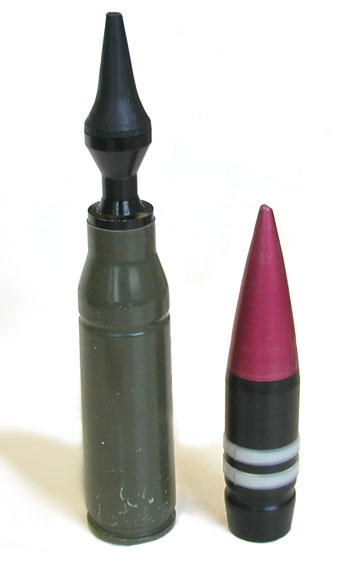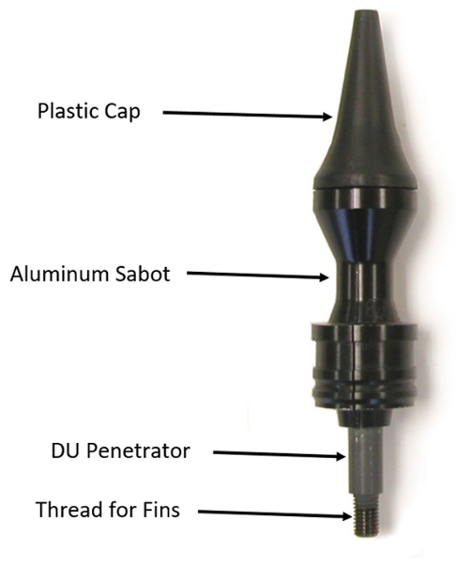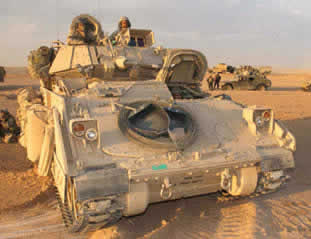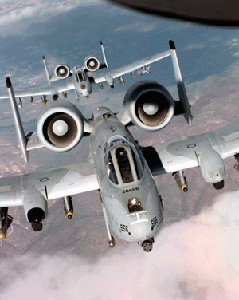Depleted Uranium Penetrator Rounds
Ok, these are not really consumer products unless you are in the arms trade. They are depleted uranium (DU) penetrator rounds used by the U.S. military.
The taller of the two (below, left) is a 25mm round fired by the "Bushmaster" canon on the Army's Bradley Fighting Vehicle.
When fired, the segmented plastic cap and sabot (photo below right) fall away leaving the penetrator, a pencil-sized rod of uranium (along with stabilizing fins) as the only projectile. The threaded bottom portion of the DU rod is used to attach the fins.


The 30mm round with the red cap is employed by the U.S. Air Force's A-10 (aka the "Warthog.") Fired by the plane’s GAU-8 canon at a rate of up to 4,800 rounds per minute, its primary function is to destroy enemy tanks.

Army's Bradley Fighting Vehicle.
Uranium metal’s high density provides the penetrator with momentum and a straight trajectory, something almost impossible to stop. Tungsten, which has a similar density to uranium, can also be used but DU has greater target penetration.
Unlike tungsten, uranium is pyrophoric. It also has a lower melting point than tungsten. As a DU penetrator strikes a target, its surface temperature increases dramatically. This causes localized softening in what are known as "adiabatic shear bands" and a sloughing off of portions of the projectile's surface. This keeps the tip sharp and prevents the mushrooming effect that occurs with tungsten.
When the DU penetrates the target vehicle, the larger fragments tend to chew up whatever is inside while the pyrophoricity of the uranium increases the likelihood that the vehicle's fuel and/or ammunition will explode. The technical term used to describe these events is "behind-the-target effectiveness."

The U.S. Air Force A-10, better known as the Warthog.
Some versions of the Army's M1A1 tank fire large 120mm DU rounds. Until recently, the Navy’s Phalanx system employed small 20mm DU rounds to shoot down incoming missiles. The current version of the Phalanx system employs tungsten rounds rather than DU.
I am grateful to Dr. William Flis for his helpful comments concerning some of the technical aspects of this page.
References
- Nuclear Metals Inc., brochure. Depleted Uranium Ordnance.
- U.S. Army training document. Depleted Uranium Training for Chemical Soldiers. TA-031-DUAT-003.
